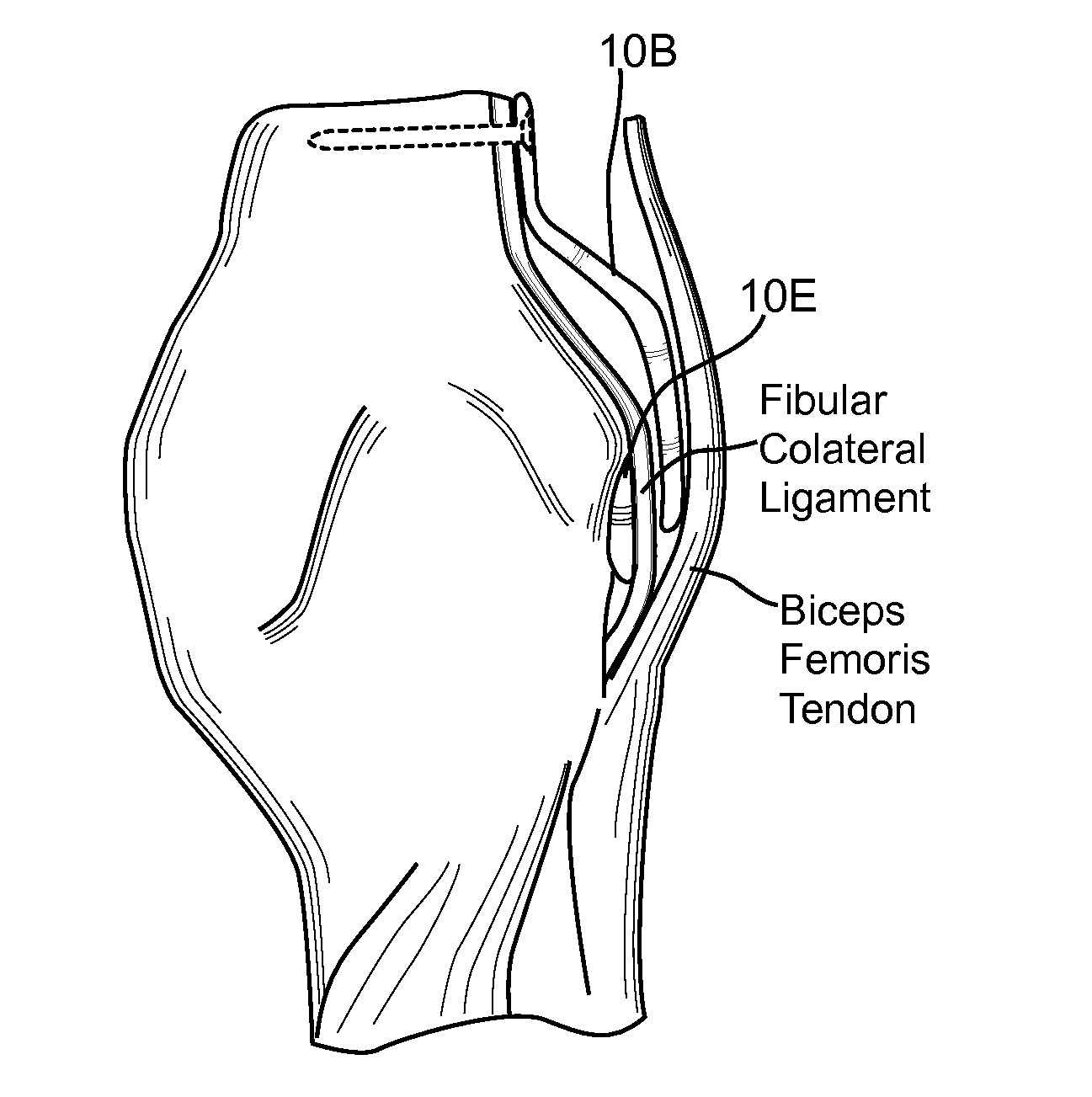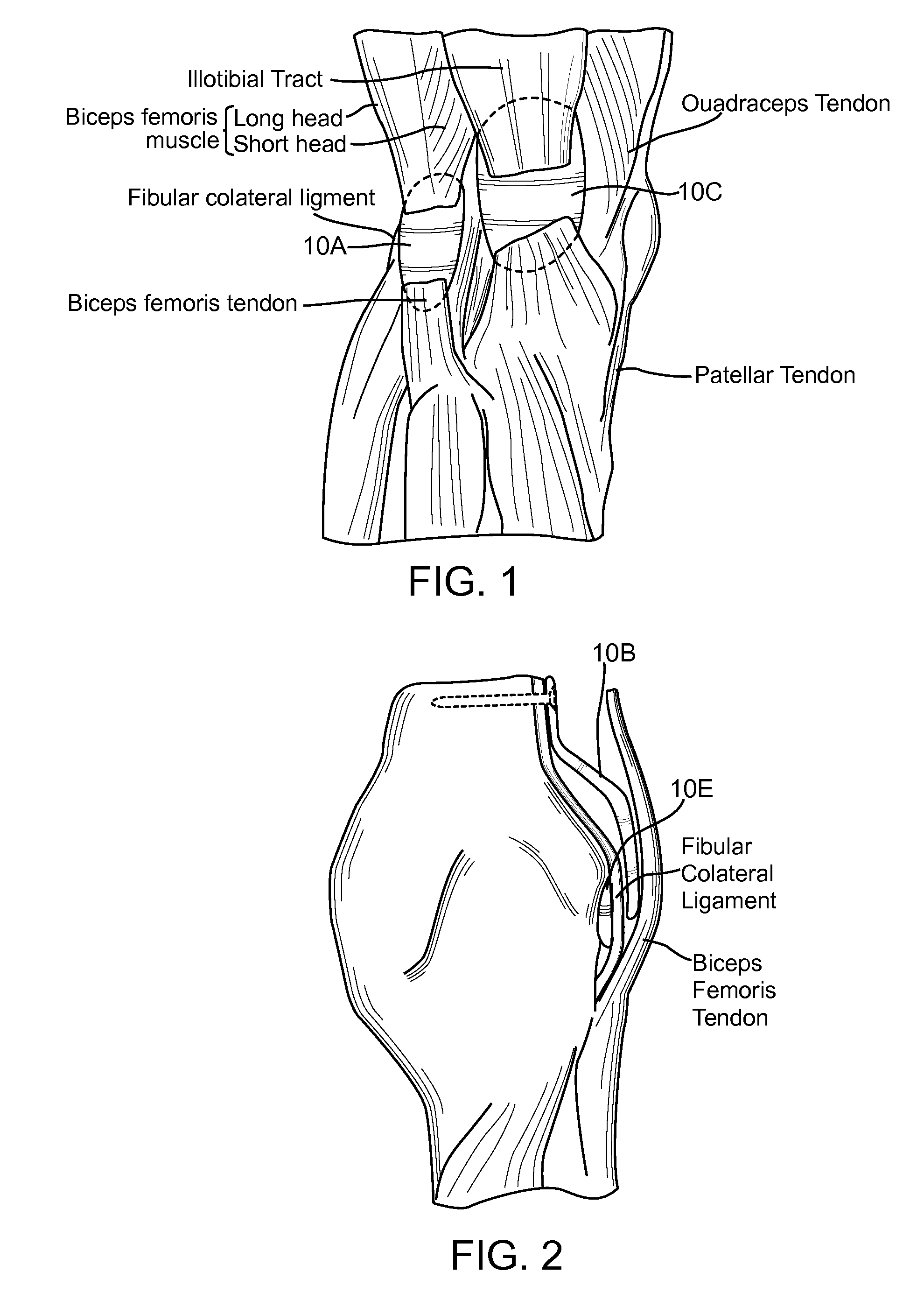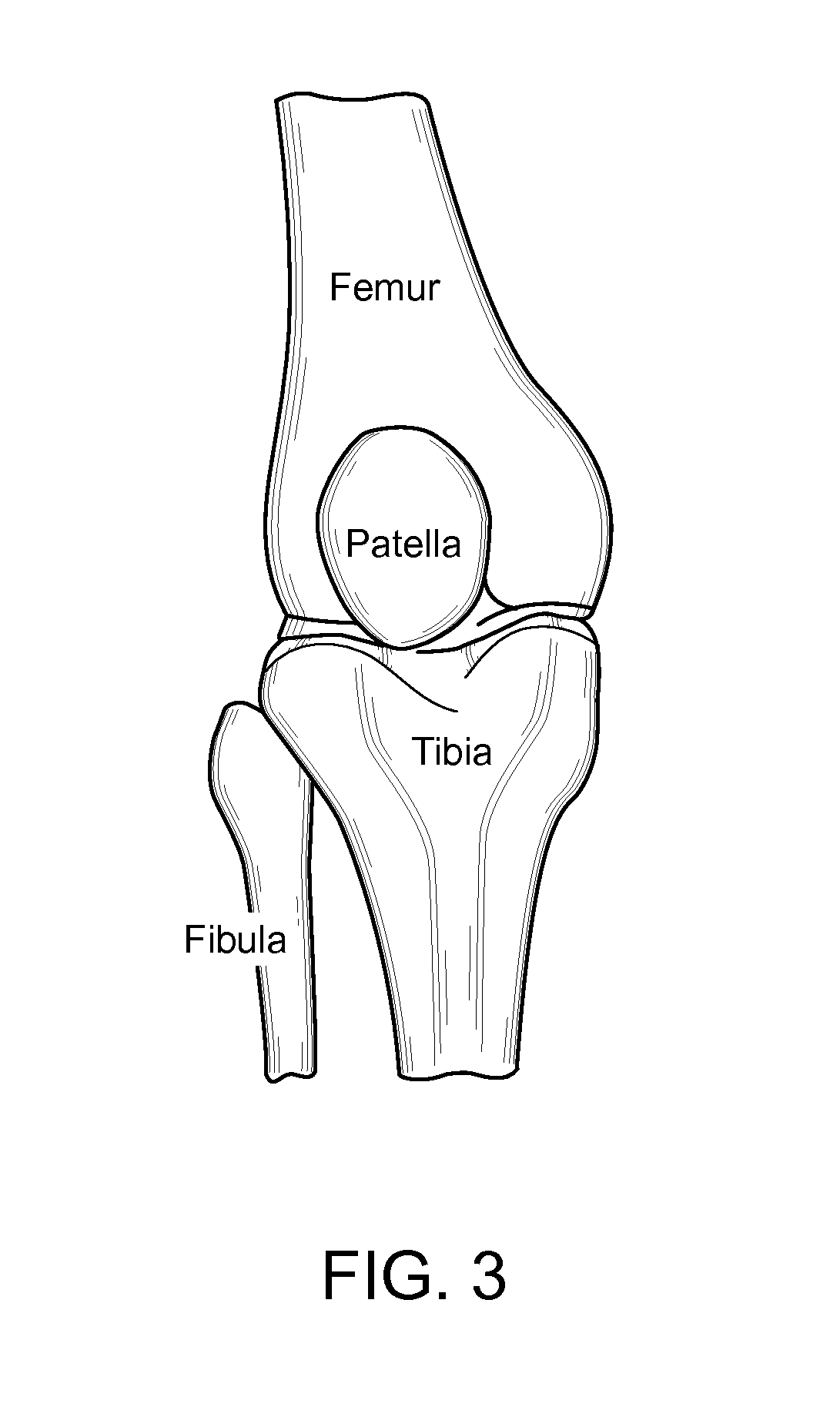Method and Apparatus for Force Redistribution in Articular Joints
a technology of force redistribution and articular joints, applied in the field of orthopaedics, can solve the problems of joint pain and loss of function, complex joint motion, bone-on-bone contact,
- Summary
- Abstract
- Description
- Claims
- Application Information
AI Technical Summary
Benefits of technology
Problems solved by technology
Method used
Image
Examples
example
[0094]To evaluate the change in loading in the medial compartment of the knee due to lateral displacement of the target tissue, simulations were performed using a computational model of the knee to determine an approximate percentage reduction in medial contact force. (For details of the computational model, see Lin, Y.-C., Walter, J. P., Banks, S. A., Pandy, M. G., and Fregly, B. J., Simultaneous Prediction of Muscle and Contact Forces in the Knee During Gait, p. 945-952, Journal of Biomechanics 2010, which is incorporated herein by reference). Medial contact forces were calculated at the two points of the gait cycle with peak medial contact forces (approximately 15% and 50% of the gait cycle at peaks 1 and 2, respectively) as a function of lateral displacement of lateral knee muscles. Lateral muscles were displaced 0 to 35 mm in increments of 5 mm as described in connection with embodiments of the invention. In this simulation, the origins of the three lateral knee muscles (tensor...
PUM
 Login to View More
Login to View More Abstract
Description
Claims
Application Information
 Login to View More
Login to View More - R&D
- Intellectual Property
- Life Sciences
- Materials
- Tech Scout
- Unparalleled Data Quality
- Higher Quality Content
- 60% Fewer Hallucinations
Browse by: Latest US Patents, China's latest patents, Technical Efficacy Thesaurus, Application Domain, Technology Topic, Popular Technical Reports.
© 2025 PatSnap. All rights reserved.Legal|Privacy policy|Modern Slavery Act Transparency Statement|Sitemap|About US| Contact US: help@patsnap.com



